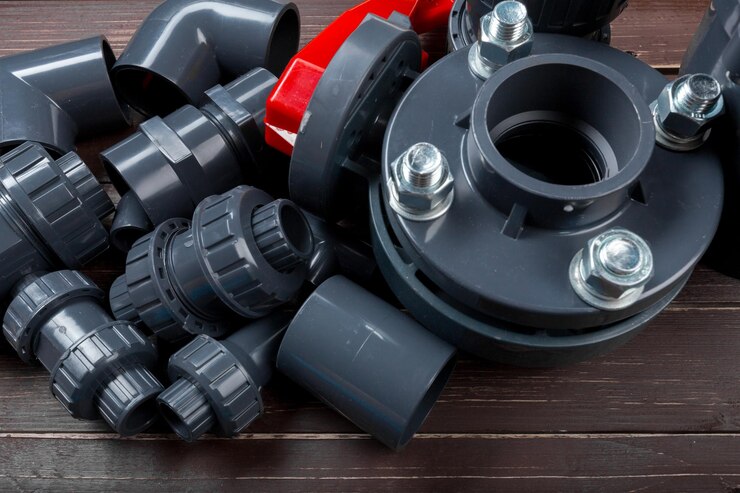Introduction to Butterfly Valves
Butterfly valves are essential components in fluid control systems, offering efficient and reliable shut-off capabilities. Unlike traditional gate valves, butterfly valves feature a circular disc positioned in the center of a pipe, which rotates to control the flow of fluid. This design enables quick operation and minimal pressure drop, making butterfly valves ideal for a wide range of industrial applications.
Understanding Lug Butterfly Valves
Lug butterfly valves, also known as bolted butterfly valves, feature threaded inserts on both sides of the valve body. These inserts, often referred to as lugs, allow for easy installation and removal of the valve from the pipeline. Lug butterfly valves are commonly used in applications where bi-directional flow control is required.
Understanding Wafer Butterfly Valves
Wafer butterfly valves, on the other hand, do not have lugs but instead rely on a wafer-style body that fits between two flanges in the pipeline. This design results in a more compact and lightweight valve, making it suitable for applications with limited space or weight restrictions. Wafer butterfly valves are typically less expensive than lug valves and are often used in HVAC and water treatment systems.
Lug vs. Wafer Butterfly Valves: A Comparative Analysis
When choosing between lug and wafer butterfly valves, several factors must be considered, including construction, installation, performance, and cost.
Construction and Installation Differences
Lug butterfly valves require additional space for installation due to their protruding lugs. This can make them more challenging to install in confined spaces or between flanges with limited clearance. On the other hand, wafer butterfly valves have a slim profile and can be installed directly between flanges, making them ideal for applications where space is limited.
Performance Variations
In terms of performance, lug and wafer butterfly valves exhibit similar characteristics, providing efficient shut-off and flow control capabilities. However, lug butterfly valves may offer slightly better sealing performance due to the additional bolts securing the valve to the pipeline.
Cost Considerations
Cost is often a significant factor in valve selection, and the choice between lug and wafer butterfly valves can impact project budgets. Wafer butterfly valves are generally less expensive than lug valves, making them a cost-effective option for many applications. However, the total cost of ownership, including installation and maintenance expenses, should also be taken into account.
Applications of Lug and Wafer Butterfly Valves
Both lug and wafer butterfly valves find applications across various industries, including oil and gas, water treatment, HVAC, and chemical processing. The choice between the two depends on factors such as operating pressure, temperature, fluid compatibility, and installation requirements.
Maintenance and Repair Considerations
Proper maintenance is essential for ensuring the long-term performance and reliability of butterfly valves. Common maintenance tasks include lubrication of moving parts, inspection of seals and gaskets, and checking for leaks or corrosion. Regular maintenance can help prevent costly downtime and extend the service life of the valve.
Environmental Impact Comparison
In today’s environmentally conscious world, the environmental impact of industrial equipment is an important consideration. Both lug and wafer butterfly valves offer advantages in terms of energy efficiency and reduced emissions compared to traditional gate valves. Additionally, their compact design and lightweight construction contribute to lower material usage and transportation costs.
Market Trends and Future Prospects
The demand for butterfly valves continues to grow as industries seek more efficient and sustainable fluid control solutions. Technological advancements, such as the integration of smart sensors and actuators, are driving innovation in the valve industry. Additionally, increasing awareness of environmental issues is prompting manufacturers to develop eco-friendly valve designs with minimal environmental impact.
Conclusion
In conclusion, choosing between lug and wafer butterfly valves requires careful consideration of various factors, including construction, installation, performance, and cost. While both types of valves offer efficient flow control capabilities, their design differences can impact their suitability for specific applications. By understanding the advantages and disadvantages of lug and wafer butterfly valves, you can select the right valve for your needs and ensure optimal performance and reliability.
FAQs
- What is the primary difference between lug and wafer butterfly valves?
- The primary difference lies in their construction and installation methods. Lug butterfly valves feature threaded lugs for bolting to the pipeline, while wafer butterfly valves fit between flanges without protruding lugs.
- Which industries commonly utilize lug butterfly valves?
- Lug butterfly valves are commonly used in industries such as oil and gas, chemical processing, and wastewater treatment, where bi-directional flow control is required.
- Are there any environmental benefits associated with wafer butterfly valves?
- Yes, wafer butterfly valves offer environmental benefits such as energy efficiency and reduced emissions compared to traditional gate valves.
- How often should butterfly valves be inspected for maintenance?
- Butterfly valves should be inspected regularly according to manufacturer recommendations, typically every six months to one year, to ensure proper operation and detect any potential issues early.
- Can butterfly valves be customized for specific applications?
- Yes, butterfly valves can be customized with various materials, coatings, and trim options to suit specific operating conditions, such as high temperatures, corrosive fluids, or abrasive particles.



